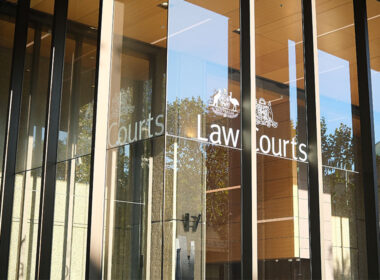As a barrister, solicitor, and mediator, I have watched mediation resolve thousands of disputes. Yet too often it is treated as a procedural step on the way to trial or as an extension of adversarial advocacy. Lawyers prepare as if they are about to face a judge, instead of embracing the distinct opportunities mediation provides. They risk not only missing the best chance for their clients to reach a resolution but also the opportunity to strengthen their practices over the long term.
Mediation advocacy requires skills that go beyond traditional litigation advocacy, including different preparation, emotional intelligence, creativity, and a willingness to view disputes as complex systems rather than linear legal contests. In this article, I share practice-based insights on mediation advocacy, covering current statistics, the “superpower” of mediation, the solicitor’s unique role, timing and mediator selection, common mistakes, preparation, the use of joint sessions, and what happens after the mediation, so that solicitors can extract maximum value for clients and, in turn, for their practices.
Settlement is the rule, not the exception
The reality of civil litigation is simple: most cases settle. In Australia, it is widely understood that the overwhelming majority of civil proceedings resolve before trial (commonly cited at around 95 per cent). In the UK, practitioners often cite that only 1–3 per cent of civil matters reach a full trial1; in the US, figures of 90–97 per cent settling before trial are frequently reported2. Precise national percentages vary by jurisdiction and measurement, but the direction is unmistakable: litigation mostly ends by agreement, not judgment.
Mediation is a key driver of these settlements. Commercial mediation in the UK achieved an 87 per cent overall settlement rate with 70 per cent of cases settling on the day and a further 17 per cent shortly after3. In New South Wales, court-annexed mediations achieve settlement rates of 48 per cent on the day, with up to 70-80 per cent resolved shortly after4.
It is evident that the civil justice system primarily operates through negotiated resolutions. Additionally, over 90 per cent of mediated cases ultimately reach a settlement. The main issue is not whether a case will be settled, but rather the timing, approach, and the extent to which the solicitor uses the mediation process to achieve the best outcome for the client.
Mediation, a superpower
Why is mediation so effective? Because it allows us to solve the whole problem. Litigation is bounded by pleadings, evidence rules and binary outcomes; mediation is a flexible, open canvas. It can resolve not only the legal questions but also the human and commercial dimensions; broken trust, reputational risk, timing, cash flow, confidentiality, and future business.
“The breadth, adaptability and client-centred control are what make mediation a superpower.”
Most disputes do not begin life as legal problems; they begin as human problems: clashing perspectives, unmet needs, strained relationships. Law is the framework we later overlay. Mediation takes us back to the source and allows us to test solutions at the human, economic, and legal levels. In practice, that means structuring phased payments, renegotiating supply terms, agreeing apologies or non-disparagement, building reputational safeguards, or crafting equity swaps: remedies that a court cannot, or would not, order in a single judgment.
Importantly, mediation compresses time and cost. Even when a matter does not settle on the day, it often narrows the issues, reduces rancour, and creates settlement momentum. From the client’s perspective, that is value. From the solicitor’s perspective, that is advocacy. The breadth, adaptability and client-centred control are what make mediation a superpower. The task for lawyers is to ensure it is used to its full potential.
The solicitor’s unique role in mediation
Clients who encounter legal challenges may find themselves in a position of vulnerability, relying on their solicitors for trusted guidance and representation. During trial proceedings, the barrister predominantly serves as the client’s advocate before the court, while the solicitor facilitates the process by providing essential support and coordination. In mediation, the solicitor serves a crucial function as adviser, coach, and strategist, effectively facilitating communication and guidance throughout the negotiation process.
In mediation, the client is the decision-maker. A solicitor is a part advocate, part negotiator, part counsellor. They still protect their clients’ interests, but they frame arguments in commercially persuasive and human terms; they coach clients to speak credibly when their voice will make the difference; they reality-test offers so clients make informed decisions. When a solicitor embraces this unique and vital role with a full understanding of the potential of mediation, it strengthens their effectiveness immeasurably. In mediation, solicitors act as trusted representatives who, through their client knowledge and mediation’s flexibility, help clients to turn vulnerability into confidence and control over the dispute.
Timing, decision to mediate, and the invitation
There is no formula for timing. The optimal window turns on the client’s goals, case complexity, procedural posture, and the other party’s willingness to engage. In practice, I have found the single most important anchor is the client’s goals; what they need to achieve (and avoid), and what the dispute is doing to their business and relationships.
Three practical points:
- Earlier is usually better: once there is enough information to negotiate responsibly. The longer litigation runs, the more money is spent, positions harden, and relationships fray. The sooner we can turn the dispute into a structured problem-solving exercise, the better.
- The invitation is a sign of strength: not weakness. Proposing mediation signals leadership and professionalism. A meaningful offer stems from deep client discussions and research into the other side’s situation and environment. Make the offer attractive by showing you understand the other side’s interests (continuity, cost, reputation) and framing mediation as a path to those interests. Outline specific benefits for them, not just in general. Sometimes the client, coached by you, is the most authentic messenger. If direct outreach is sensitive, enlist the mediator as a neutral “bridge”.
- Revisit the decision continually: as new facts emerge, costs accrue, or tactics shift, a previously “unripe” case can become ripe. Timing is strategic, not static.
Choosing the right mediator
Choosing the mediator is a solicitor’s hidden superpower. Deep subject-matter expertise can assist; however, legal or industry knowledge is secondary to the ability to effectively guide parties toward settlement. A good mediator will quickly grasp the key legal points, but not every legal or industry expert is skilled in subtle diplomacy, process fluency, neutrality, negotiation craft, and emotional intelligence to manage power imbalances and high conflict. Ask yourself:
- Is the mediator primarily facilitative, evaluative, or transformative, and which style suits the personalities and culture in this dispute?
- Will they balance the law, the problem and the relationship, rather than fixating on only one?
- Do they encourage joint sessions or default to caucus?
A solicitor can easily assess this by contacting the proposed mediators and discussing the matter. If the mediator is reluctant to listen, ignores your story or cultural background, dismisses the emotions or legality of the conflict, or finds it difficult to engage, you can determine whether the mediator is suitable for the mediation.
A mediator who can hold legal, commercial and human threads in tension gives your client the best chance of both settlement and a sustainable outcome.
Common lawyer mistakes in mediation
Even strong lawyers stumble in mediation. Five predictable traps:
- Poor preparation: some lawyers wrongly believe there is no downside to participating since the process is non-binding, and they do minimal preparation. They may have a thin understanding of the file, no clear negotiation plan, or they’ve failed to exchange crucial documents beforehand. As a result, a key opportunity is missed, and the client has a poor experience.
- Insufficient client preparation: if the client is overly anxious, surprised, becomes defensive during joint sessions or maintains unrealistic expectations, this may indicate areas where additional guidance from solicitors is needed. (See the next section.)
- Treating mediation like a trial: adversarial posturing, point-scoring openings, or personal attacks shut down dialogue. Swap battle mode for problem-solving.
- Rigid “bottom lines” and ultimatums: have a walk-away point but beware of early ultimatums that destroy flexibility and credibility.
- Ignoring human factors: emotions, reputations, and relationships drive settlement. If lawyers address only the law and money, they miss half the dispute.
Each of these errors damage not only the mediation process but also the client’s experience, which subsequently influences their view of their solicitor.
Essential preparation for a mediation
Preparation is where solicitors can make the biggest difference. In court, you speak for your client; in mediation, you prepare your client to speak. Preparation isn’t about the case only; it’s about the client also.
- Educate the client: explain the structure (joint session/caucus), the mediator’s role (facilitator, not judge), and confidentiality/without prejudice. Normalise the slower pace and the back-and-forth of the day. Anxiety drops when surprises disappear.
- Identify interests: go beyond legal positions to uncover what truly matters – timing, certainty, apologies, reputational safeguards. Help the client articulate their underlying interests, needs and priorities, as distinct from their legal “position.” Do the same exercise, thinking about the other side’s likely interests. This frames the negotiation in terms of mutual problem-solving exercise.
- Risk analysis: map best/worst-case outcomes, probabilities, timelines and cost. Tie the analysis to the client’s commercial reality (cash-flow, management bandwidth, market impact).
- Strategy and role planning: develop a negotiation strategy with your client. Design the mediation process with the mediator (possibly other side) at the pre-mediation conferences. Decide on tactics like the opening offer or statement, what concessions might be made, and what your bottom line is (and critically, whether the bottom line is flexible). I often encourage clients to speak during the opening joint session or at least to directly answer some questions. Personal involvement can show sincerity and can convey things (e.g. regret, determination, goodwill) better than any lawyer’s argument.
- Manage expectations and emotions: coach the client to manage heat—lowball offers, blame, or harsh words—and to keep eyes on the goal.
“Proper preparation transforms mediation from a legal exercise into a human experience and a problem-solving exercise.”
By demystifying the process and doing this groundwork, you empower your client to actively participate in the mediation rather than being a deer in headlights. An informed, prepared client paired with a prepared lawyer is the recipe for mediation success. Proper preparation transforms mediation from a legal exercise into a human experience and a problem-solving exercise. And clients never forget who gave them that voice.
Joint sessions: the hidden goldmine
Many lawyers fear joint sessions. In my experience, they are often the hinge on which settlements turn. Over-reliance on caucus can sap commitment and leave parties disengaged. By contrast, joint sessions foster trust, allow direct communication, humanise the dispute, and give clients their “day in court” without the costs or trauma.
Practical tips for joint work:
- Don’t wing it: plan your message: clear, constructive, aimed at persuasion, not intimidation. Recognise and validate what you’ve heard from the other side, which builds credibility. Ask questions to understand the other side, not to intimidate.
- Frame interests, not blame: keep focus future-oriented: “How do we fix this?” not “Who caused this?”. Try not to review the prior negotiation history. Use business and human language, not legal jargon. Frame your client’s perspective in a reasonable, interests-focused way. For example, rather than “We are here because you breached the contract and owe us $500,000,” consider: “We’re here because our client needs certainty about payment and completion of this project, and we want to find a solution that works for both sides.
- Empower the client to speak: the client is best placed to tell the story in a joint session. Coach the client to speak calmly and genuinely to the other side, not at the mediator, about impact and hopes. A sincere client statement can humanise your case more than any legal argument. Expect heat, let some emotion play out under the mediator’s guidance.
After the mediation
What happens after the mediator adjourns is part of advocacy too:
- Capture the deal: leave with a signed term sheet or a near-final deed. Ambiguity grows overnight.
- If not settled, keep momentum: many “no-settle” days become settlements within weeks. Use post-mediation shuttling, targeted information exchange, or a short follow-up session to close remaining gaps.
- Debrief and reset: report clearly to the client: what moved, what remains, next steps and timelines. The client’s experience of closure (even partial) strongly colours their trust in you.
A disciplined post-mediation phase preserves gains, converts near-misses, and leaves clients feeling guided, not abandoned.
How great client experience builds solicitors’ practices
Mediation advocacy is not only about outcomes; it is about the client’s experience. Clients remember not just what they got, but how they felt. If they felt heard, prepared and in control; if you saved them time, money and anguish, they will trust you deeply, return to you in future disputes, and refer colleagues and friends. Even where a mediation yields only partial agreement, clients often say, “We didn’t sort out everything, but we finally understood each other that changed everything.”
From a practice perspective, this is a competitive edge. You become known as the lawyer who can resolve tough matters intelligently, not just fight them expensively. Your files turn over faster, your matter-mix improves, and your referral base strengthens. In short, litigation may win judgments; mediation advocacy wins clients and clients are the foundation of every thriving practice.
Conclusion
Mediation is no longer an “alternative”; it is the mainstream path for civil dispute resolution. For solicitors, mastering mediation advocacy is therefore essential. When solicitors prepare clients thoroughly, time the process wisely, choose the right mediator, avoid litigation reflexes, run effective joint conversations, and steward the matter after the day, they deliver better outcomes and better client experiences.
In doing so, solicitors serve their clients’ immediate interests and strengthen their own practices. Mediation advocacy does not turn solicitors into softer lawyers; it makes solicitors smarter, more trusted lawyers. And that is what clients value—and remember.
Ruwan Wathukarage is a barrister and mediator at 5 Selborne Chambers.
[1] UK Government, Civil Justice Statistics Quarterly April to June 2025 (Statistical Bulletin, 5 September 2025) https://www.gov.uk/government/statistics/civil-justice-statistics-quarterly-april-to-june-2025/civil-justice-statistics-quarterly-april-to-june-2025: LegalKnowledgeBase, ‘What Percentage of Civil Suits Settle?’ (Web Page, 2024) https://legalknowledgebase.com/what-percentage-of-civil-suits-settle
[2] LegalClarity, ‘How Often Are Lawsuits Settled Out of Court?’; https://legalclarity.org/how-often-are-lawsuits-settled-out-of-court/, 14 July 2025; [Data from the U.S. Department of Justice indicates that between 90% and 97% of all civil cases are settled or otherwise resolved before a trial commences.]. William P. Lynch; Why Settle for Less? Improving Settlement Conference in Federal Court; Washington Law Review; (2019);Vol 94, 1237.
[3] Centre for Effective Dispute Resolution, CEDR Mediation Audit 2025 (Report, February 2025) 11 https://www.cedr.com/insights/cedr-mediation-audit-2025
[4] Supreme Court of New South Wales, Annual Review 2024 – Alternative Dispute Resolution (Report, 2024) 5 https://www.supremecourt.nsw.gov.au/documents/Publications/Annual-Reviews-%2B-Stats/2024-annual-review/2024-Annual-Review-alternative-dispute-resolution.pdf [Practitioner commentary suggests that when ‘still negotiating’ matters are included, the effective settlement rate of court-annexed mediations may be closer to 80 per cent, though the Court itself does not publish a combined figure]




